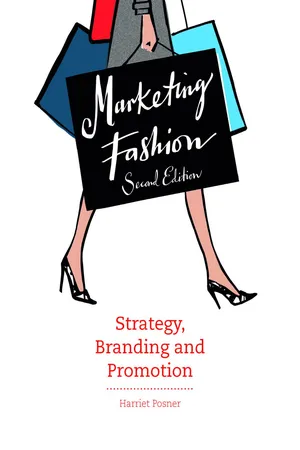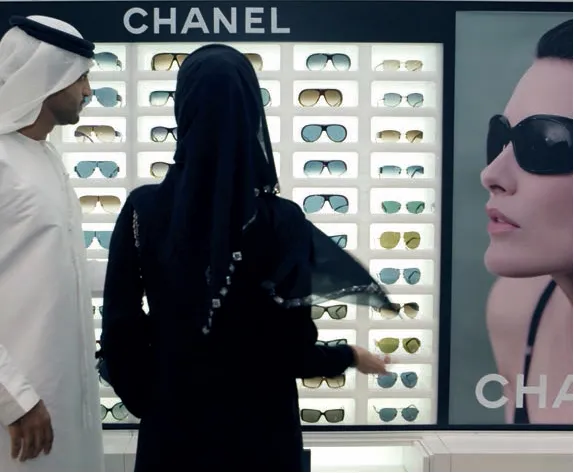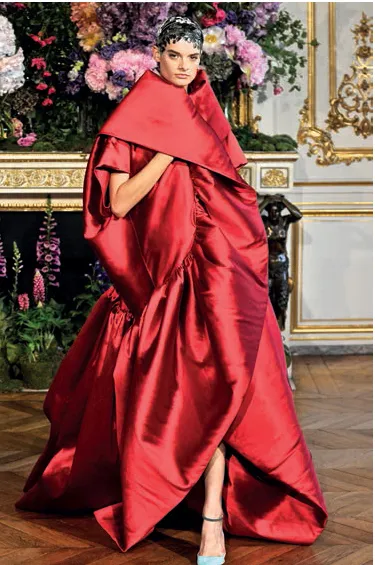![]()
1
The Fashion Market
“Marketing is not the art of finding clever ways to dispose of what you make. Marketing is the art of creating genuine customer value.”
Philip Kotler
Fashion is a global market with a complex structure that operates on many different levels to reach everyone from fashionistas to those who just purchase clothing as a necessity of everyday life. The range and scope of fashion is immense, from an ornate haute couture gown made by hand in a Paris atelier to a simple mass-produced T-shirt manufactured in China. This opening chapter is divided into two sections. The first will provide you with an outline of the basic structure of the industry, explain the different levels of the fashion market and discuss examples of global markets. The second section gives key definitions of marketing and explains why marketing is such an important element of the fashion industry.
Fashion market sectors
The fashion market can be subdivided in a number of ways depending on what aspect of the market or industry is being analysed. For example, by product sector such as clothing and apparel or accessories; by geographic market such as Europe, US, Asia or South America; by market level, haute couture or ready-to-wear; or by function such as sportswear, performance wear, formal wear and so on. Information is broken down in this way so that companies are better able to analyse market data and monitor their business results more effectively. Market statistics can be compiled and analysed by one or more of these criteria. The list and diagram below outline some of the criteria that can be used.
»Market or product category
Apparel, accessories, perfume or homeware. The apparel market can be further subdivided into womenswear, menswear and childrenswear
»Product type, end-use of product or fashion style
Denim, lingerie, sportswear, formal wear or contemporary fashion
»Market level
Couture, luxury, mid-market or value market
»Location of market
Global, international, national or regional
FASHION MARKET SECTORS
The diagram gives an indication of some of the key market and product sectors within womenswear, menswear, childrenswear and accessories. As new niche markets develop, so the chart can be adapted to include emerging sectors, for example, clubwear, urban wear, and performance wear.
Matthew Zorpas, seen here wearing a suit by Hardy Amies, is a London-based fashion consultant who blogs at www.thegentlemanblogger.com. He has become an authority on men’s style. There is a growing demand for designer and trend-led men’s fashion. The UK menswear market, for example, is predicted to increase by nearly 30 per cent by 2019.
A young Emirati couple shopping for sunglasses, Dubai.
An advert for Shocking, the fragrance launched by Elsa Schiaparelli in 1937. The curvaceous bottle, shaped like a woman’s torso, was modelled on the physique of Mae West and designed by the surrealist artist Leonor Fini.
The Jean Paul Gaultier signature fragrance takes its inspiration for the bottle design from the Schiaparelli original.
Fashion market levels
Fashion can be divided into two overarching levels:
»Haute couture and couture
»Ready-to-wear
Haute couture
Haute couture is literally defined as ‘high sewing’ or ‘fine sewing’ and is fashion at its highest level. Haute couture operates at a quality and standard way above that of luxury designer ready-to-wear. Prices are extremely high (an haute couture dress can sell for a six-figure sum) so there is an unwritten rule of limiting sales of any garment of over £100,000 to one per continent to ensure the exclusivity that clients expect. For lesser-priced garments, sales are usually confined to no more than three per continent. Haute couture clients view themselves as art patrons and consider these clothes to be a collectable form of art and an investment. The term ‘haute couture’ is protected by law and governed by very strict rules set by the Chambre Syndicale de la Haute Couture in Paris. To be classified as a bona fide haute couturier a fashion house must create made-to-order garments for private clients. They must also produce two collections a year in January and July, employ a minimum of 20 full-time staff, run an atelier in Paris and show a set minimum of runway looks, or ‘exits’, as they are known, of evening and daywear. In the 1980s and 1990s the Italian designer Valentino showed over 180 exits for his haute couture show, now he produces only 40. Very few design houses are approved as haute couture establishments showing at the official Paris haute couture; Chanel, Dior, Jean Paul Gaultier, Valentino, Giorgio Armani, Jean-Louis Scherrer, Elie Saab, Dominique Sirop, Giambattista Valli, Stéphane Rolland and Franck Sorbier are all recognized as true haute couturiers. Maison Martin Margiela and Alexis Mabille were awarded haute couture status in 2012.
Haute couture relies on the expertise of many highly skilled artisans and craftspeople who labour behind the scenes to produce all the luxurious embroideries, trimmings and accessories required by the haute couturiers. Traditionally Paris has been home to a large number of studios or ateliers specializing in millinery, shoemaking, embroidery, beading, creating decorative flowers, buttons and costume jewellery. In 1900, Paris had over 300 plumassiers or feather specialists; today the Lemarié atelier is virtually the only one still in existence. Chanel bought the business along with five other specialist craft ateliers: Michel, specializing in millinery; shoemakers, Massaro; embroidery house, Lesage; button and costume jewellery makers, Desrues; and the gold- and silversmith, Goossens. While many argue that something as arcane and extravagant as haute couture cannot or should not survive, it seems that demand has not diminished, but shifted to a new set of younger, more fashion-conscious clientele from emerging rich nations such as China, Russia and the Middle East. For the Christian Dior show in July 2013, Belgian designer Raf Simons, responding to this growing international audience, divided the collection into segments for Asia, Africa, Europe and the Americas. Haute couture is a relatively small business in terms of the overall fashion market; the real value is its power as a marketing tool. Global names such as Chanel, Armani and Dior receive valuable press coverage of their haute couture collections, raising the status and desirability of their brand and keeping it in the public eye.
Lady Gaga launched her unisex perfume, Fame, in 2012. Photographer Nick Knight designed the bottle; Steven Klein shot the advertising campaign. The perfume itself is a black liquid that becomes invisible when it touches the skin.
BASIC HIERARCHY OF FASHION
Haute couture sits at the pinnacle of fashion. Although only a small sector of the overall market, its influence on designer and high-street fashion is of great importance. Designers distil ideas from their own couture collections and use them in a more commercial format for their ready-to-wear collections.
In turn the designer and luxury brand ready-to-wear collections set the trends followed by mass-market fashion retailers. When trends work their way down from the top of the market to the bottom, it is known as a trickle-down effect.
Fashion designers that are not recognized by the Chambre Syndicale can still produce exclusive custom-made clothing but this must be marketed as couture rather than haute couture. Prices for couture can still be high. The British designer Giles Deacon produces two or three couture pieces a year and a dress may cost more than £40,000. The price of a Vera Wang wedding dress can be in the region of US$25,000, although in an attempt to keep customers happy during the recession, Wang introduced what she calls demi-couture with a lower price tag.
Alexis Mabille Haute Couture Autumn/Winter 2013. A dramatic robe-style silk coat with a large collar and back draping into a bow.
Ready-to-wear
Fashion product that is not custom-made for an individual client is known as ready-to-wear or off-the-peg clothing. Ready-to-wear garments are premade, come in predetermined sizes and are usually mass-produced and industrially manufactured. Ready-to-wear fashion is available at all levels of the market including:
»High-end fashion
»Middle market
»High street
»Value fashion
Middle-market fashion product is designed and priced to cater for customers wishing to purchase at a level between luxury and mass market. A designer or fashion brand that has established itself within the high-end market may decide to introduce a secondary diffusion line or bridge line, as it is known in the United States, so that they can extend their brand into the middle market. Examples are See by Chloé, Moschino’s Cheap & Chic, Donna Karan’s DKNY line and Emanuel Ungaro’s Emanuel line. Another example of designer diffusion lines are the affordable collections created for stores such as Target, The Outnet, Payless and J. Crew in the US and Debenhams in the UK. High-street retailers such as Banana Republic, Cos, Hoss Intropia and Whistles can also be considered mid-market. The term middle market is not particularly inspiring and is not always perceived by retail brands as a position they wish to aspire to. Some combat this by re-stating their market level, claiming they offer affordable luxury or masstige (prestige for the masses, or mass luxury) rather than mid-market fashion. Affordable luxury is seen as an important market opportunity now that so many fashion consumers view luxury as something that should be available to all, even those with limited budgets.
Mass-market fashion refers to high-street multiples or fashion retail chains such as Gap, Topshop, H&M...









